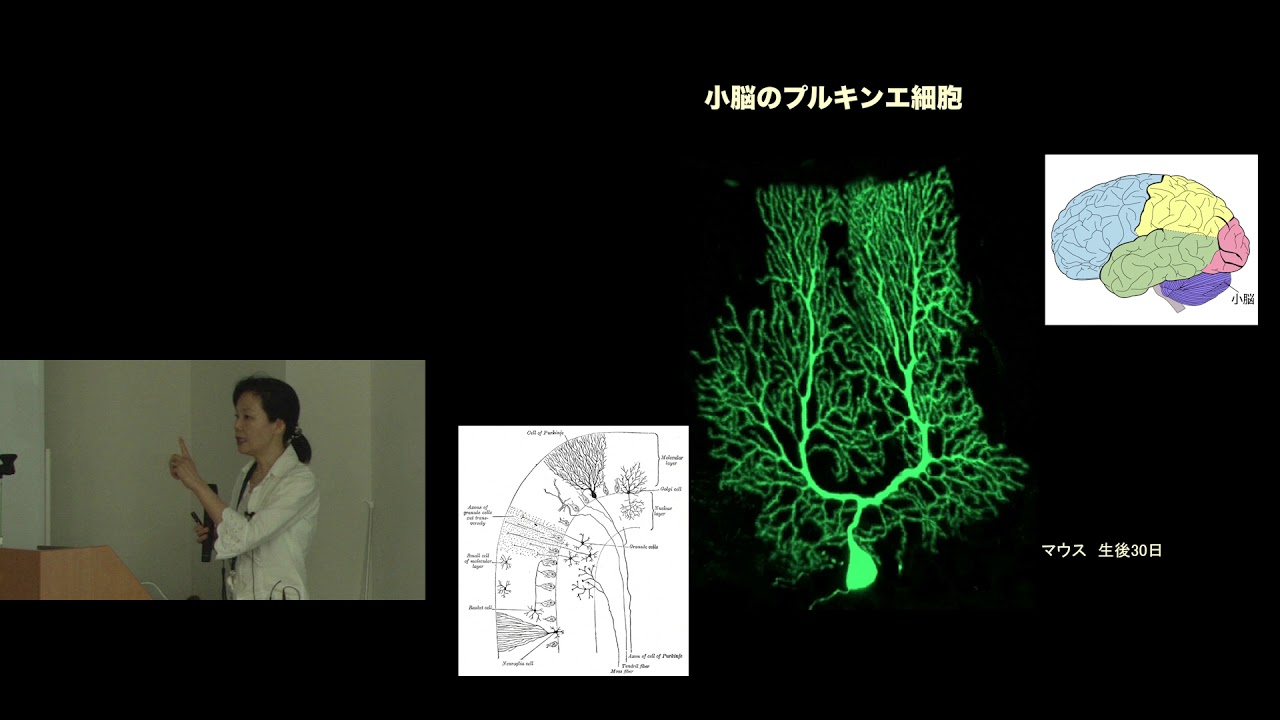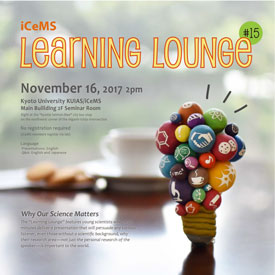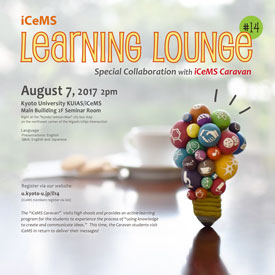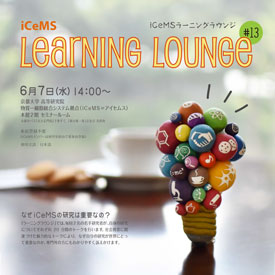第7回 iCeMSラーニングラウンジ:長谷川 光一 + Daniel Packwood
マラリアの無い世界を造る 長谷川 光一 さん
概要
「ラーニングラウンジ」では、
長谷川 光一 さん
「マラリアの無い世界を造る」
マラリアって何?知らない人も多いかもしれません。
研究者コメント
今回は、iCeMSと、インド国立生命科学研究センター(
Daniel Packwood(ダニエル・パックウッド)さん
“Nanotechnology by Herding Molecules – Hints from Theory”
Society is demanding smaller and smaller electrical devices. Nanotechnology is an entirely new approach to device manufacturing, in which extremely small objects are created by assembling molecules into patterns and shapes. But can nanotechnology truly be realized? This talk will explain the key role that theoretical science is playing in the development of nanotechnology.
研究者コメント
Viewers beware! You’re in for a scare! Here, we touch on the spooky topic of molecular self-assembly, in which molecules inexplicably gather together to form tiny devices and machines. Might this be the work of a poltergeist? Here, I burst your bubble and explain how molecular self-assembly can be simulated on a computer via judicious mathematics and theoretical chemistry. References to Canada and farm animals are included.
講義詳細
- 年度
- 2016年度
- 開催日
- 2016年4月27日
- 開講部局名
- iCeMS 物質-細胞統合システム拠点
- 使用言語
- 英語
- 教員/講師名
- 長谷川 光一 さん(物質-細胞統合システム拠点(インドサテライトグループ))
Daniel Packwood さん(物質-細胞統合システム拠点(Daniel Packwood グループ))
- 開催場所
- 京都大学 iCeMS 本館2階 セミナールーム
関連講義
 公開講義
公開講義
見学 美根子
iCeMS 物質-細胞統合システム拠点
2018年度 公開講義
公開講義
堀毛 悟史, Partha Chowdhury
iCeMS 物質-細胞統合システム拠点
2017年度 公開講義
公開講義
会津学鳳高校の学生の皆さん, 加藤 知道 さん
iCeMS 物質-細胞統合システム拠点
2017年度 公開講義
公開講義
鈴木 淳さん, 古川 修平さん
iCeMS 物質-細胞統合システム拠点
2017年度


